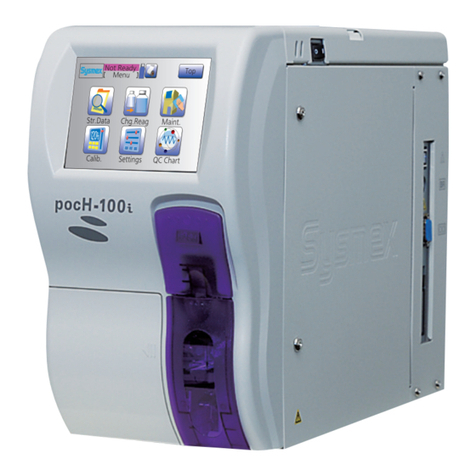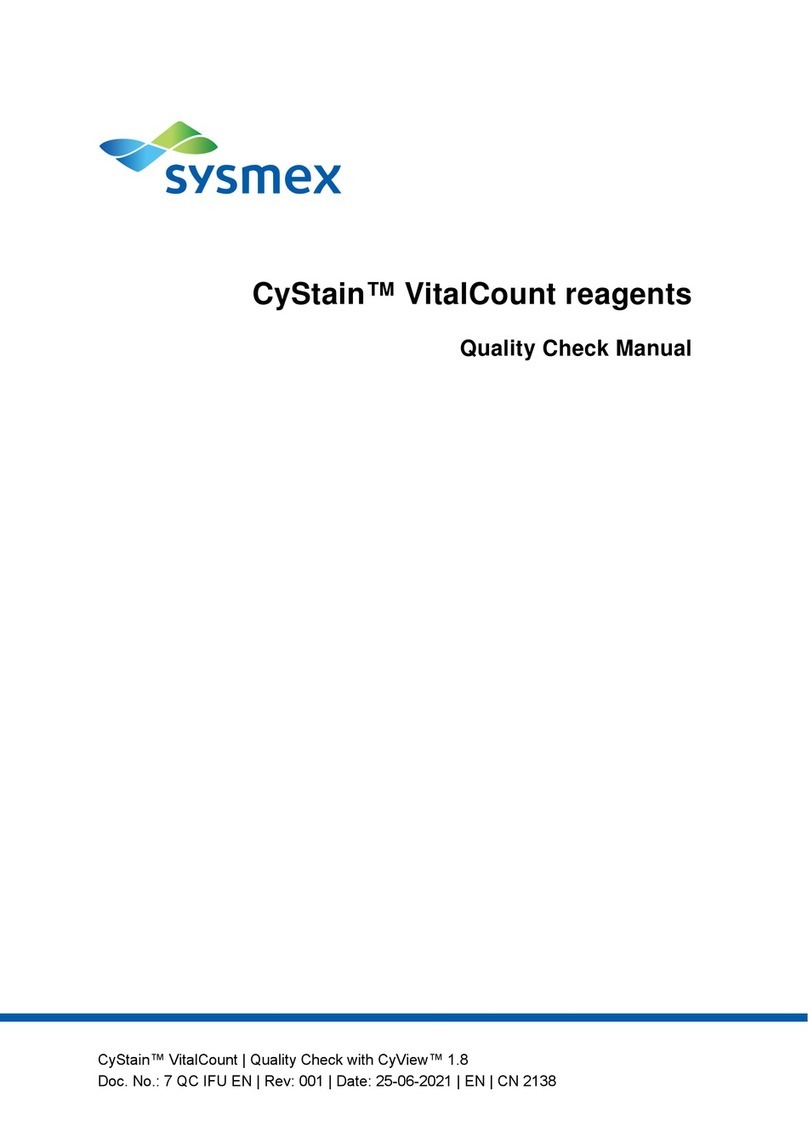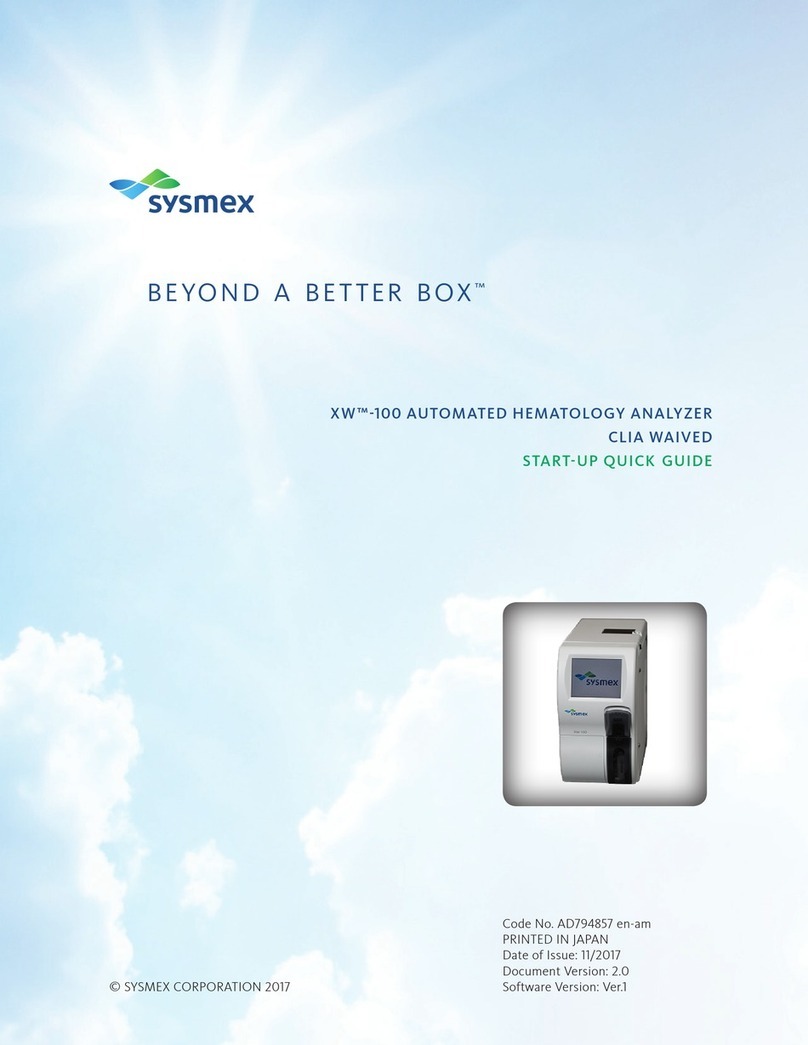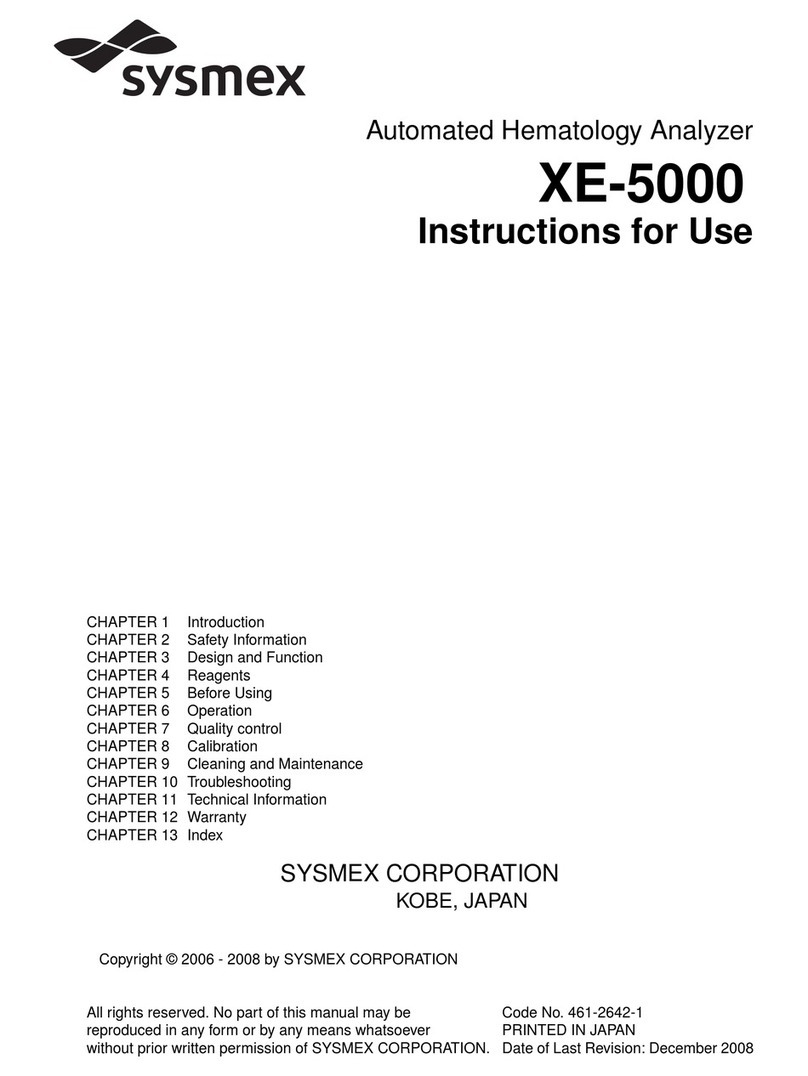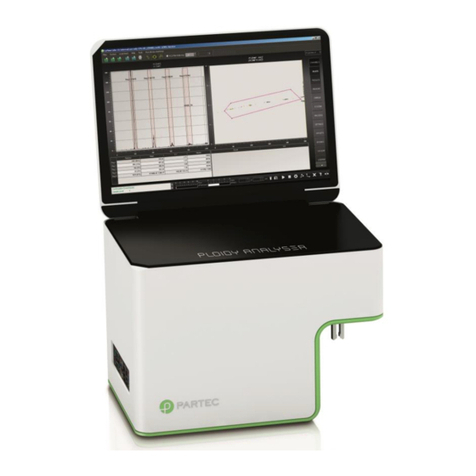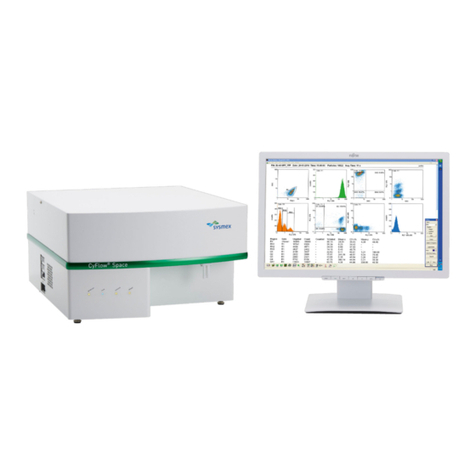
Pa
e 5 of 32
Biohazard
•All parts and surfaces of the analyzer as well as QC vials and contents must be regarded
as potentially infectious due to its contact with blood. To avoid infection:
o
Use protective lab coat, eye protection and disposable gloves when operating or
maintaining the analyzer.
o
NEVER touch the analyzer, accessories or waste fluids with bare hands.
o
Should you inadvertently come in contact with potentially infectious materials or
surfaces immediately rinse the affected skin area thoroughly with water and
follow your facilities prescribed cleaning and decontaminationprocedures.
o
After completion of work with the analyzer wash your hands thoroughly with
soap and water or a disinfectant hand cleanser.
XW pack D and XW pack L Reagents, XW CELLCLEAN
TM
, and XW QC CHECK
TM
Description
XW pack D, (2 x 2L) is a proprietary reagent which is used to blank the system, dilute the whole
blood sample prior to analysis and rinse the analyzed sample out of the system post analysis.
This reagent is shipped fully reconstituted and ready for use.
XW pack L (2 x 250mL) is a proprietary reagent which is used to lyse RBCs during the testing
process to determine WBC and Hemoglobin parameters. This reagent is shipped fully
reconstituted and ready for use.
XW CELLCLEAN
TM
is a proprietary single use weekly care fluid which keeps the
aspiration pipette, sample path, and rinse cup clean and operational.
•20 single use tubes per box
•Note: Weekly care must be performed every seven calendar days. The system will
not process patient samples until weekly care is performed.
•XW CELLCLEAN
TM
is shipped fully reconstituted and ready for use.
XW QC CHECK
TM
, (2 vials of each level per package) is a proprietary 3 level control which
is performed to verify correct system performance.
•XW QC CHECK
TM
is shipped fully reconstituted and ready for use.
Intended Use:
The XW QC CHECK is a stabilized whole blood matrix designed for statistical process control
of the Sysmex XW-100 automated hematology analyzer. It is not intended for calibration of the
analyzer. Assayed parameters include: WBC, RBC, HGB, HCT, MCV, MCH, MCHC, PLT,
LYM%, Other WBC%, NEUT%, LYM#, Other WBC#, NEUT#, RDW-SD, RDW-CV and
MPV.
•Other WBC%/# is comprised of eosinophils, basophils and monocytes.
•Two vials of each level are included. The first vial (primary) has sufficient fill quantity
and should be used each testing day until a new lot arrives unless the primary vial is lost
or broken.
